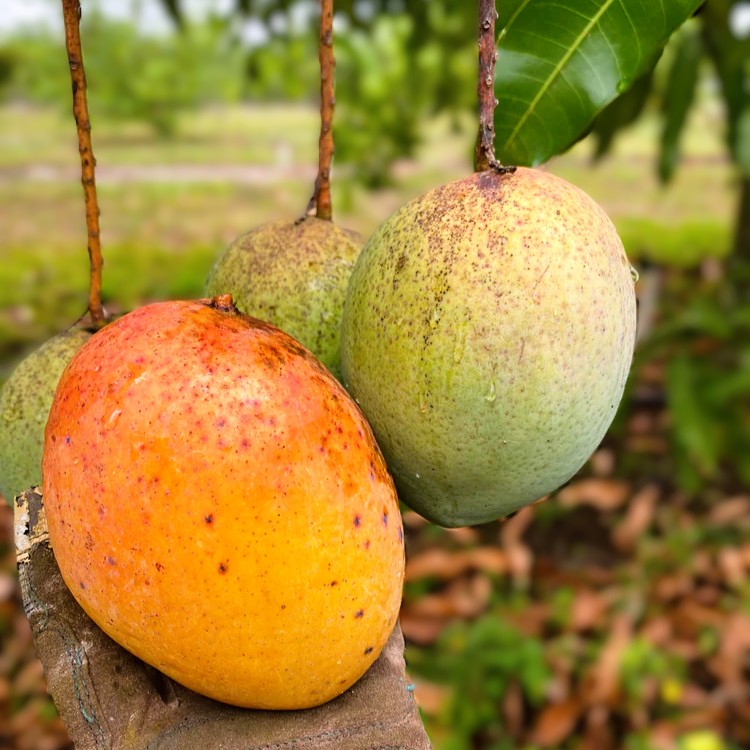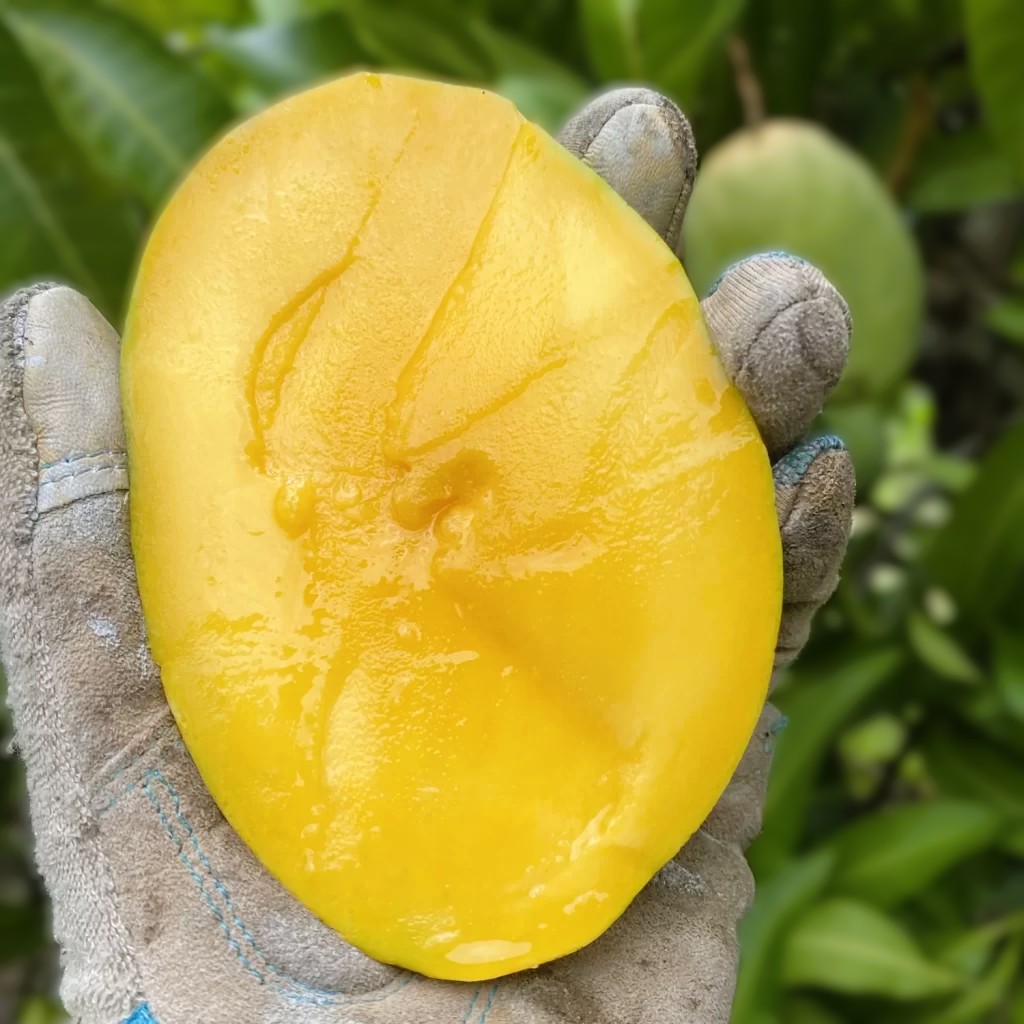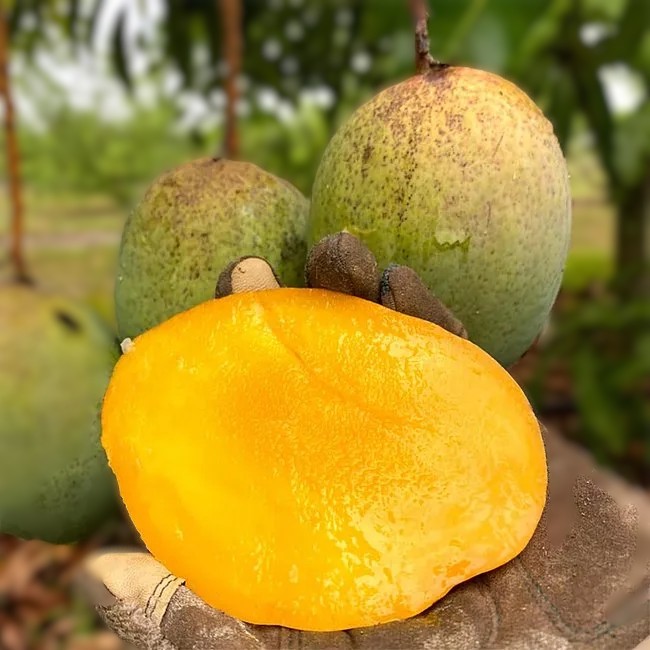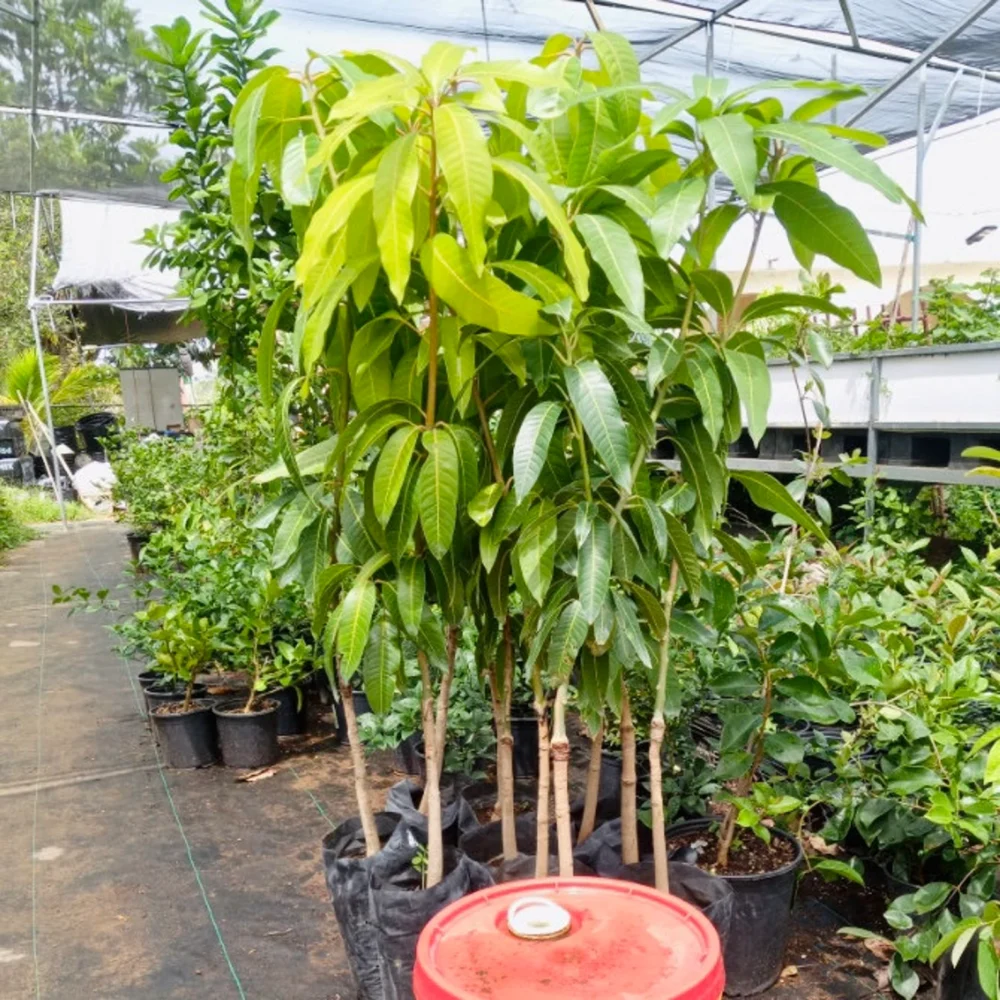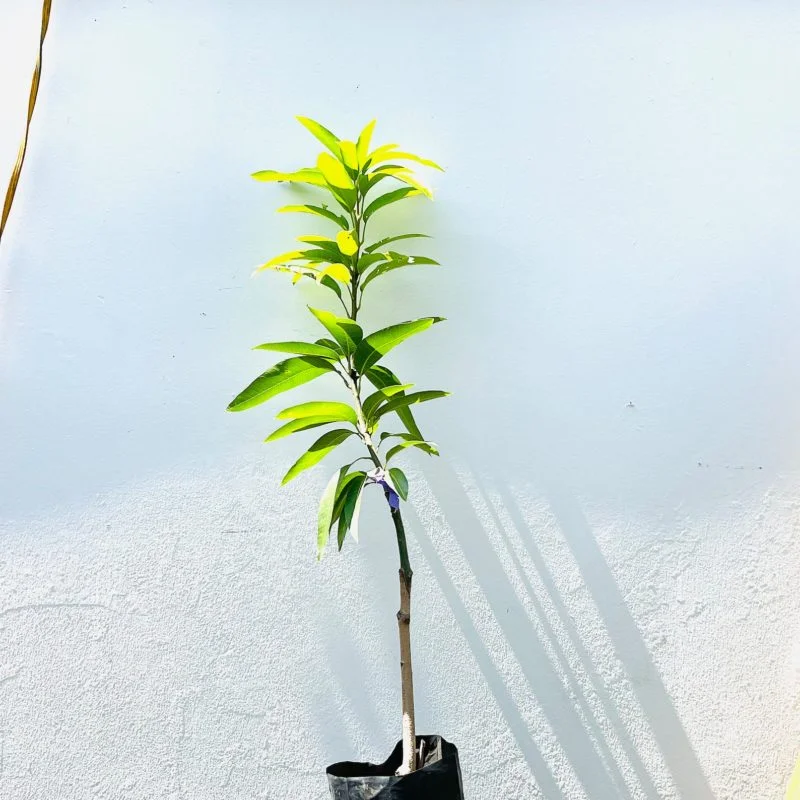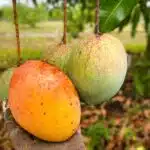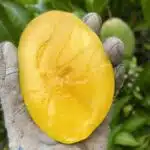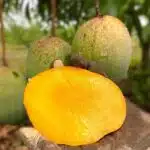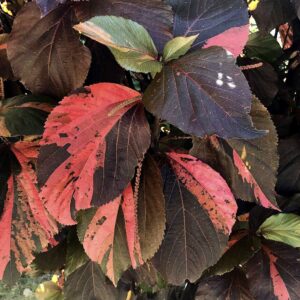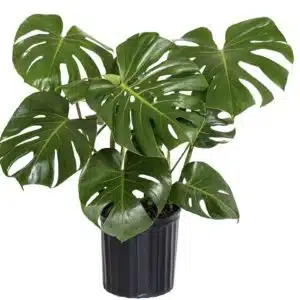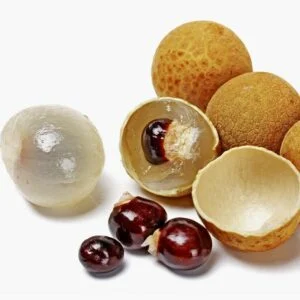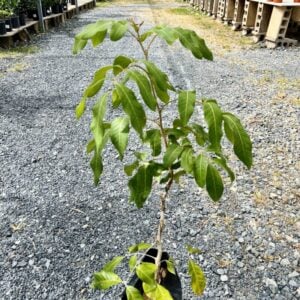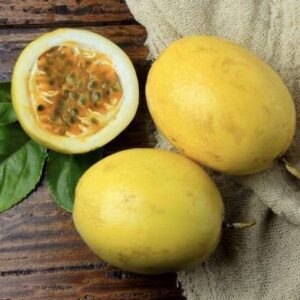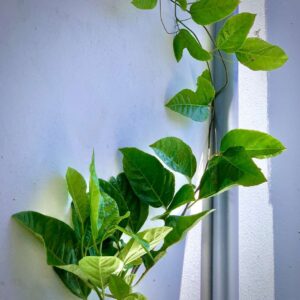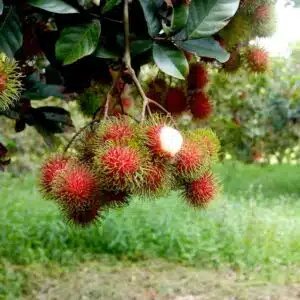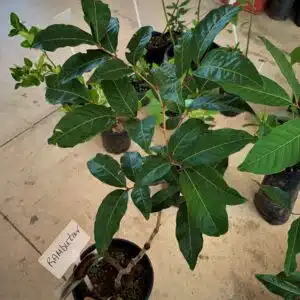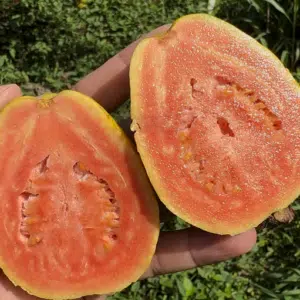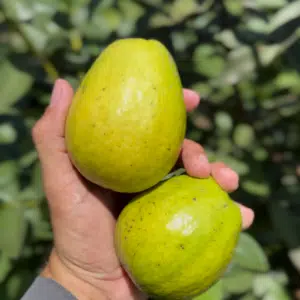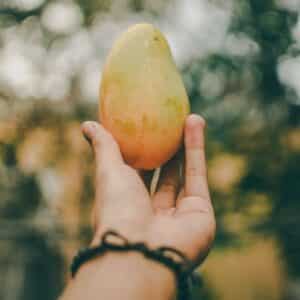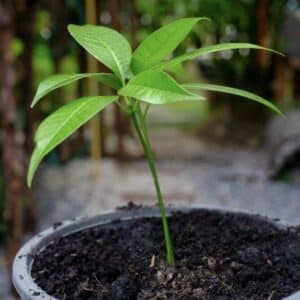Coconut Cream mango tree (mangifera) tropical big live fruit tree 3’-4’ tall Grafted tree
$69.99
The Coconut Cream mango tree, a grafted variety prized for its exceptional fruit quality, is a remarkable addition to any garden or orchard. Scientifically classified as Mangifera indica, this mango variety stands out due to its unique coconut-flavored fruit, excellent disease resistance, and manageable growth habit. It is one of the premier mango cultivars for both home gardeners and commercial growers seeking a tropical fruit with unparalleled taste and texture.
Coconut Cream mango tree
Appearance and Characteristics:
The Coconut Cream mango tree typically grows to a moderate height of about 10 to 15 feet when maintained through regular pruning, making it an excellent choice for smaller spaces or container gardening. Its canopy is dense and compact, featuring glossy, dark green leaves that provide a lush, tropical appearance. This semi-dwarf variety produces stunning red and green-skinned mangoes that develop a golden-yellow hue when fully ripe.
The fruit of the Coconut Cream mango tree is medium to large, often weighing between 16 to 24 ounces. Its flesh is fiberless, smooth, and exceptionally juicy, offering a rich and creamy texture. What truly sets it apart is its flavor—a delightful fusion of tropical mango sweetness with a hint of coconut, making it a favorite among mango enthusiasts.
Growing Conditions:
Coconut Cream mango trees thrive in warm, tropical to subtropical climates and are well-suited for USDA hardiness zones 9b to 11. They prefer full sun exposure to achieve optimal growth and fruit production. Planting the tree in a location with at least 6 to 8 hours of direct sunlight daily ensures vibrant foliage and abundant flowering.
These mango trees grow best in well-draining, slightly acidic to neutral soils with a pH range of 6.0 to 7.5. Loamy or sandy soils enriched with organic matter are ideal. While Coconut Cream mango trees are drought-tolerant once established, consistent watering during the flowering and fruiting season is essential for the best fruit yield.
Watering and Fertilizing:
The Coconut Cream mango tree benefits from a balanced watering schedule. Newly planted trees should be watered regularly to establish a strong root system. Once established, reduce the frequency but ensure deep watering during dry periods or when the tree is fruiting. Overwatering should be avoided, as it can lead to root rot or other fungal issues.
Fertilizing with a high-quality, slow-release fertilizer specifically formulated for fruit trees is recommended. During the growing season, apply a balanced fertilizer with an emphasis on nitrogen, phosphorus, and potassium (NPK). Incorporating micronutrients such as magnesium, manganese, and iron ensures healthy leaf development and fruit production.
Care and Maintenance:
Coconut Cream mango trees are relatively low-maintenance, but proper care is key to maximizing their potential. Regular pruning is recommended to shape the tree, remove dead or diseased branches, and improve air circulation within the canopy. This helps prevent fungal infections and promotes a more robust fruiting process.
Applying a layer of mulch around the base of the tree helps retain soil moisture, regulate temperature, and suppress weed growth. However, avoid piling mulch against the trunk to prevent rot. During the flowering and fruiting stages, thinning excess fruits can improve the quality and size of the remaining mangoes.
Pests and Diseases:
The Coconut Cream mango tree exhibits excellent disease resistance, particularly to anthracnose, which is a common fungal issue in mango trees. However, like all fruit trees, it can occasionally attract pests such as scale insects, mealybugs, and mango seed weevils. Regular inspection of leaves, stems, and fruits is essential to catch any infestations early.
Applying organic pest control methods, such as neem oil or insecticidal soap, can effectively manage pests without harming beneficial insects. Preventative measures, such as ensuring good air circulation and avoiding overwatering, significantly reduce the likelihood of fungal infections.
Propagation:
Coconut Cream mango trees are propagated through grafting, a method that ensures the resulting tree retains the same desirable characteristics as the parent plant. Grafting also accelerates the fruiting process, allowing growers to harvest mangoes within 2 to 4 years of planting.
Uses and Benefits:
The Coconut Cream mango is cherished for its extraordinary flavor and creamy texture, making it ideal for fresh consumption. It can also be used to prepare smoothies, desserts, jams, and chutneys. Its unique coconut undertones add an exotic twist to culinary creations.
Beyond its fruit, the tree itself adds aesthetic value to landscapes and gardens with its vibrant foliage and tropical appeal. Its compact size and manageable growth habit make it suitable for container gardening, patios, or small yards.
Landscaping and Container Gardening:
The Coconut Cream mango tree’s size and adaptability make it a versatile choice for landscaping and container gardening. It can serve as a focal point in tropical-themed gardens or provide shade and beauty to outdoor spaces. When grown in containers, ensure the pot is large enough to accommodate its root system and use well-draining soil.
Container-grown trees may require more frequent watering and fertilizing than those planted in the ground. However, they offer the advantage of mobility, allowing the tree to be moved indoors or to a sheltered location during cold weather.
Conclusion:
The Coconut Cream mango tree is an exceptional grafted variety that combines stunning aesthetics with extraordinary fruit quality. Its rich, creamy mangoes with a hint of coconut flavor are sure to delight anyone who tastes them. With proper care, including regular watering, fertilizing, and pruning, this tree will reward you with years of bountiful harvests and tropical beauty. Whether you’re an experienced gardener or new to growing fruit trees, the Coconut Cream mango tree is a valuable addition to any collection.
| Planting Bag + Soil |
Planting bag + Soil ,I have soil and container |
|---|

